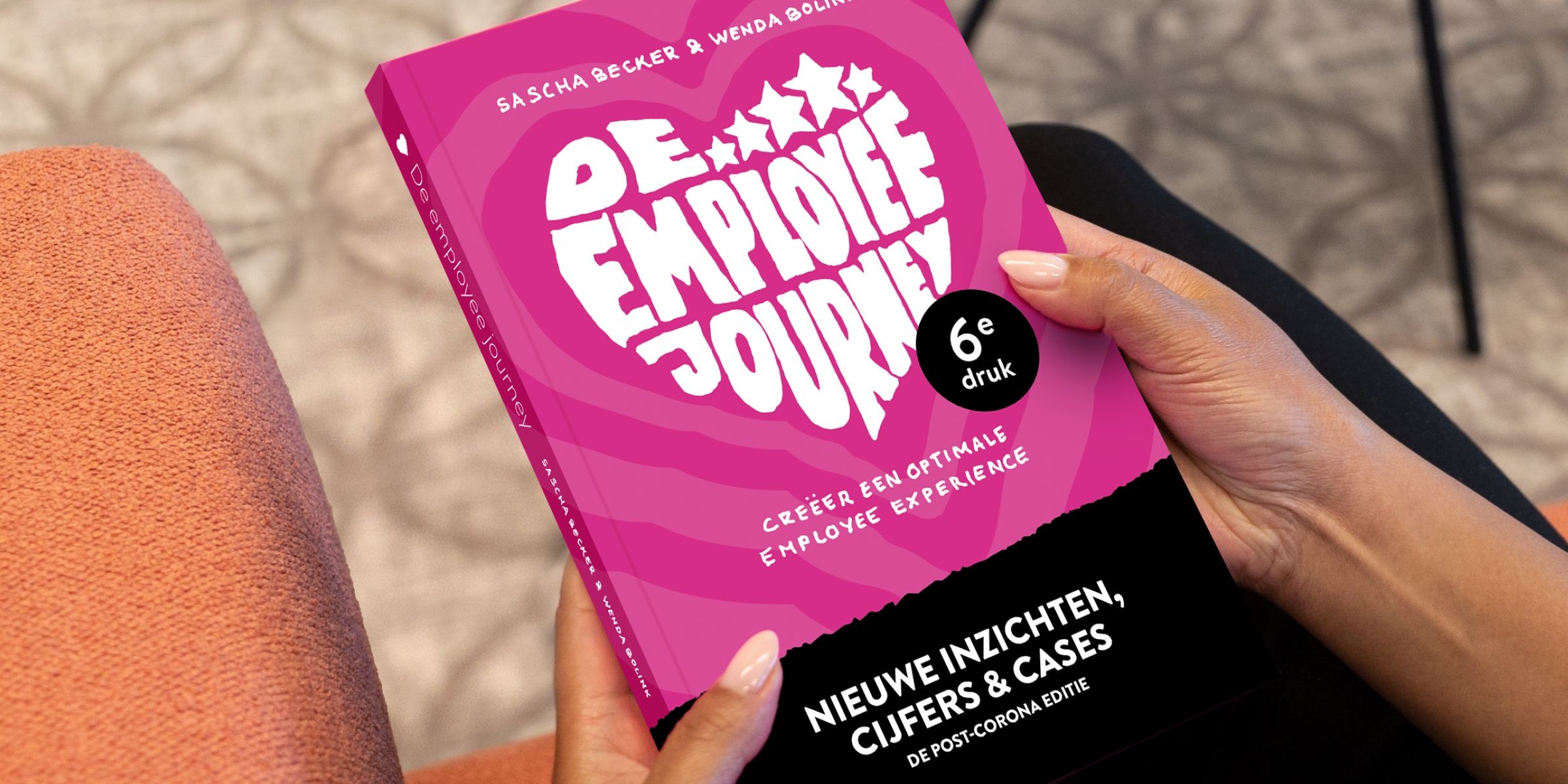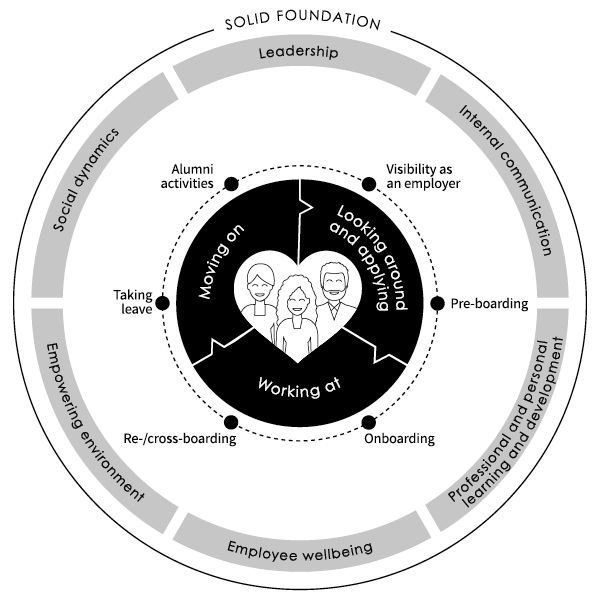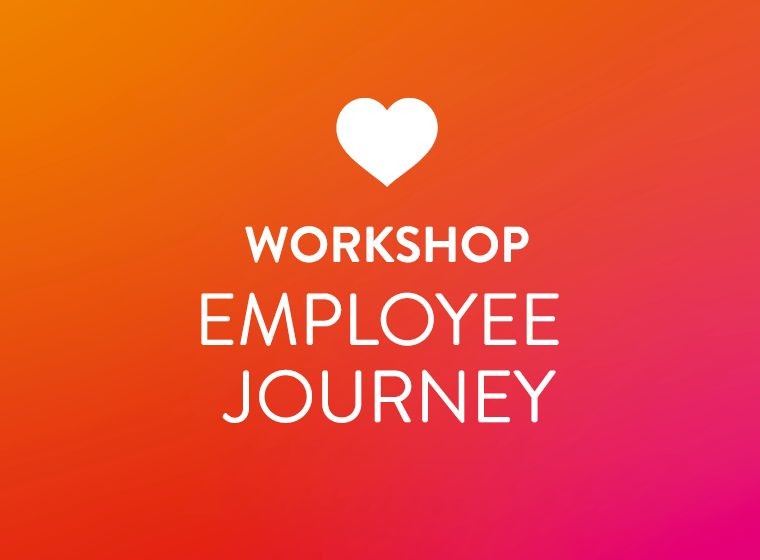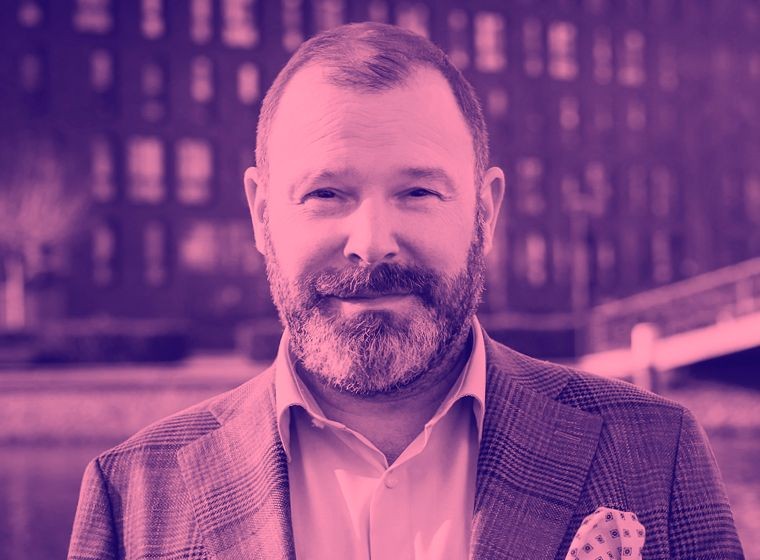The employee journey: post-Covid edition
The sixth edition of The Employee Journey is out! In this updated issue, we take you on a journey through the entire employee journey with new insights, statistics and cases. A must-read for anyone who wants to improve the employee experience in their organisation. And for everyone who wants to attract and retain the right talent in today's tight labour market.

What’s inside?
-
Insight into the entire employee journey: the most important influencing factors and contact moments
-
Written from the perspective of the organisation and the employee
-
The latest statistics and insights from practice and theory
-
Tips & tricks to get started right away
-
Appealing and inspiring cases

Ready to start your journey?
Order your copy here and get started. Want to know more? Read our Q&A with authors Sascha Becker and Wenda Bolink below.
5 questions for the authors: Sascha Becker and Wenda Bolink

1. There’s more and more talk about the employee journey. Why is it attracting so much attention?
Sascha: "The importance of the employee journey and its translation into an optimal employee experience have long been underestimated. Even now, organisations still aren't paying enough attention or they take a fragmented approach. Even at A-list brands with a great external image, the employee journey often isn't on the board's agenda. It’s astonishing. Often, businesses have an immediate recruitment need and quickly default to tactics: what tools they can use. This may solve a short-term problem, but it doesn’t help you to win the ‘war for talent’ in the longer term. Marketers have had a highly structured and well-thought-out approach to the customer journey for years, but when it comes to the employee journey, we're just getting started. Talent is scarce and today many different factors determine whether someone chooses a particular organisation and stays with it. Attracting, engaging and retaining the right talent is essential. What's more, having a good reputation and satisfied and loyal customers starts inside the organisation, with your employees. They make the difference for your customers. Happy employees = happy customers. Simple. And that creates long-term business value."
Wenda: "Exactly. But how do you ensure that talent chooses you? That your employees give the best of themselves every day and fulfil your promise to your customers? And that if and when someone leaves, they do so with a positive feeling about your organisation? This requires conscious and systematic investment in improving the employee experience throughout the entire employee journey."
2. So, the employee journey is some kind of holy grail?
Sascha: "The journey is a means and absolutely not a goal in itself. And the great thing about it is that every organisation already has an employee journey – but often it is not aware of this and faisl to invest sufficient time, money and attention in it. Identifying the journey taken by an employee and future talent is key. It provides insight into the points to consider and it helps the Communication and HR functions to set priorities."
Wenda: "It also creates consistency, especially if you take the promise you make to future and current employees as your starting point; if you make that promise part of every touchpoint and confirm it continuously throughout the journey. Do this and you will tell a consistent story that you continuously give meaning to."
3. That’s easier said than done. How do you put this into practice as an organisation?
Wenda: "There is no one-size-fits-all, perfect interpretation of the employee journey. We can, however, identify a number of touchpoints in the three phases of the journey: looking around and applying, working at the organisation, and moving on. Things like looking at your careers site, how job interviews take place, an employee's first day at work, or an exit interview."
Sascha: "On top of this, there are six factors that an organisation can work on to influence the employee experience. From leadership to learning and development to an empowering environment. We always advise clients to keep things manageable: to eat the elephant one bite at a time, so to speak. So, find out where the worst pain points are – and therefore the biggest opportunities – and start working on these first, from the inside. Involve your existing talent In your plans and ensure internal alignment because, after all, you have to make what you promise externally true internally."
4. And who owns the employee journey?
Sascha: "Top management is ultimately responsible. If senior leaders don’t believe in investing in the employee journey and don’t make it a priority, you may as well not bother. You won't get further than token gestures or Communication or HR 'pet projects' that ultimately yield little. A waste of your time and budget. Not investing in the employee journey is to miss an opportunity. If you look at what aligned employees deliver for your organisation financially, and do your homework, then it becomes easy to make a convincing business case to your board and top management. Being able to talk numbers and how much business value you can create usually helps to quickly win over top management."
Wenda: "It’s the responsibility of HR and Communication to make senior management aware of this and encourage them to take ownership. This takes time, especially as the employee journey is still a fairly new concept in the Netherlands. Our experience is that you have to do a lot of lobbying: you're on a mission… But once you have commitment from the top, HR and Communication can work together to further flesh out and implement the journey. Both functions are important players who can reinforce and complement each other through close cooperation. HR can think about which products and Initiatives to display in the 'shop window' and eventually design and develop those products based on the needs, wishes and requirements of the organisation and Its employees. And Communication can make sure employees are aware and excited by those."
5. Does the journey ever end?
Wenda: "In fact, there is no concrete end point for either employees or the organisation. Even after someone leaves the organisation. In an ideal journey, you stay in touch with former employees through, for example, alumni activities. The journey also never stops for the organisation. Investing in the employee journey is something for the long term. The needs of employees change constantly, new generations enter the workforce and developments in the labour market never stop."
Sascha: "This means that, as an organisation, you must keep the employee journey on the agenda. Systematically. And you must constantly respond to changing wishes, needs and trends. You have to work continuously on all the factors that ensure that talent feels connected and involved, because only then will you get everything out of your company’s most valuable asset now and in the future: your people."
 Switch to Dutch
Switch to Dutch







